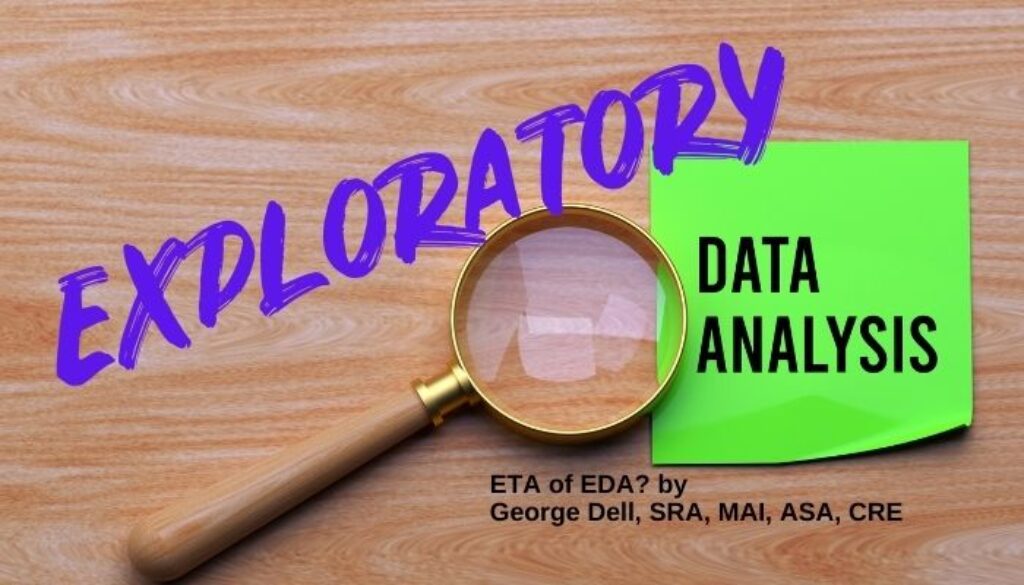Is it time to recognize the importance of EDA in all valuation products?
EDA is Exploratory Data Analysis, sometimes called PDA (Preliminary Data Analysis).
Who does it? Is it necessary? And why do we care?
EDA (Exploratory Data Analysis) is a key part of the modern, data science solution to value and risk. It’s an inherent part of any research, such as an appraisal. Someone always makes some decisions about the subject property and the data to be used.
It’s a necessary part of all valuations, including AVM, BPO, Evaluation, ‘hybrids,’ assessment, and EBV (Evidence Based Valuation).
What may differ is the nature of the preliminary selection and viewing of the data. It happens every time.
- Who does it?
- When is it done?
- How good the results?
EDA comes near the front of the valuation process. Recall that the process is quite basic:
- Detail question to be answered;
- Recognize the relevant data;
- Apply predictive models;
- Refine use of results.
EDA is the bridge between step 1 and step 2. The analyst (or user) has to make a decision to connect the subject elements to market elements. Exploring the data connects the subject to available data through the identification and measurement of the market. Basic economics tells us that the ideal is for the analytic data set to match the relevant market segment.
For simplicity, lets compare legacy appraisal practice with AVM industry practice. The context is the above steps 1-4: Question, data, prediction, usefulness.
Appraisal is founded on the appraiser “picking comps.” USPAP uses the word strongly, but it is never defined. Appraiser education states that a comparable should be similar, competitive, and “able to be compared.” The definition is circular or missing. Yet it’s the most critical part of valuation!
So the appraiser ‘picks comps.’ This is based on “experience, training, and education.” Judgment. To my knowledge, there are no methods measuring similarity in today’s basic or advanced education. Missing.
The appraiser’s EDA is done in his/her head. Based on experience and “market familiarity.”
AVMs, by definition are ‘automated.’ In theory, the ‘question’ is pre-answered. It’s obvious it’s a house! This is presumptive. Someone – the user, an employee, or AVM company – someone makes the judgment that this AVModel is appropriate for this subject property.
Sometimes, the ‘model’ disqualifies itself, or a human (loan person, underwriter, or loan clerk) makes the decision that the model doesn’t work this time. Note: the ‘hit rate’ is a calculation of how often the model cannot find the subject, or that the result is ‘unreliable.’
In a coming series: Appraisal Modernization, we will ask how we may address this universal challenge.
